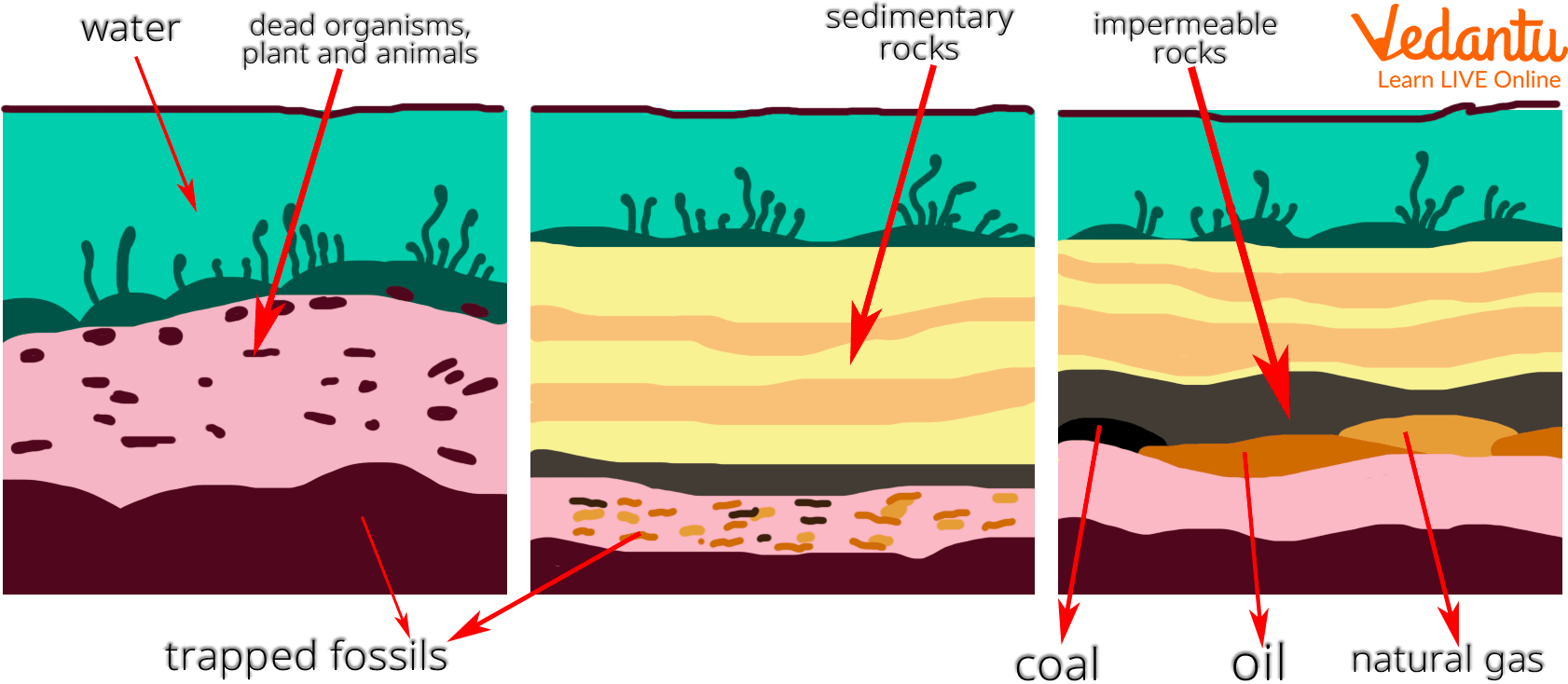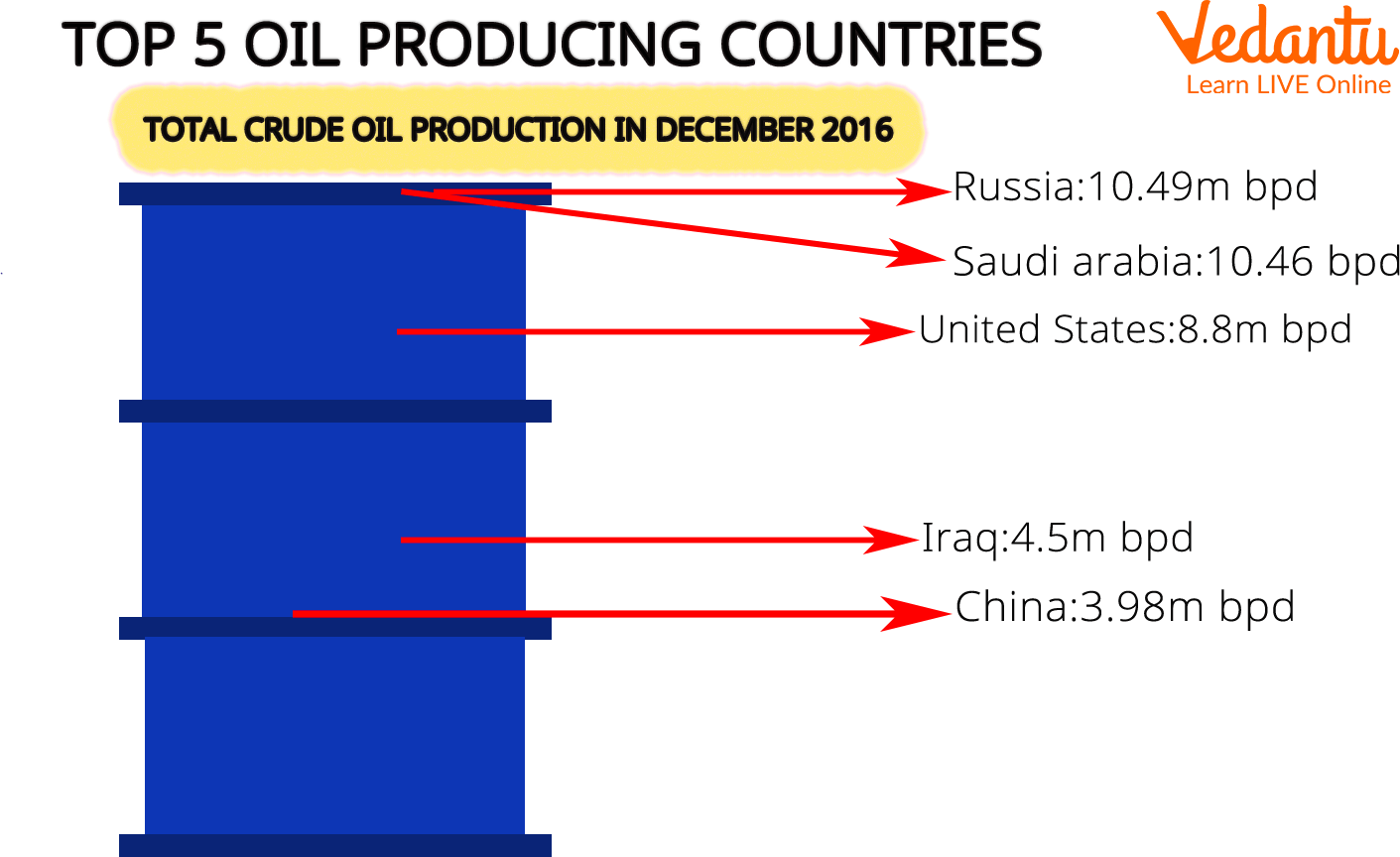




Step-by-Step Formation of Petroleum with Examples
We all see various kinds of vehicles moving from one place to another but have you ever thought about how all these vehicles move? We travel with the help of buses and cars but what makes the vehicle move as we need food to run our lives? So what makes the different modes of transportation move? The answer to all such questions is petroleum.

Vehicles Moving on the Road
Petroleum is one of the most widely used commodities in the world and petroleum for kids is an essential topic to teach the importance of petroleum in our life. So let us study it in detail.
What is Petroleum?
Petroleum, which is also called crude oil, is a fossil fuel that is a naturally occurring yellowish-black liquid mixture that is mainly made of hydrocarbons. Petroleum is also popular as “Black Gold.” It occurs in rock formations naturally.
How is Petroleum Formed?
Petroleum is a fossil fuel that is formed from the remains of dead animals and plants.
When the animals and plants die, they sink down and settle on the sea bed of the oceans.
Millions of years ago, the dead vegetation and wildlife got decomposed and then got mixed with the silt and sand.
Then certain bacteria helped in decomposing this organic matter with which some chemical changes were caused.
The matter consisting of hugely hydrogen and carbon was left behind. Because there is no adequate oxygen at the sea bottom, all the matter could not completely decompose.
The matter that was partially decomposed settled on the sea bed and was covered eventually with multiple layers of silt and sand.
This burying process took a million years and then due to high pressure and temperature, the remaining organic matter got completely decomposed and oil was formed.

Petroleum Formation
Sources of Petroleum
Petroleum is mainly found in the underground reservoirs where the ancient seas were located. The petroleum reservoirs are mainly found beneath the seafloor and the land. From there, the crude oil is extracted with the help of big drilling machines.

Top 5 Oil-Producing Countries
Advantages and Disadvantages of Petroleum
Advantages of Petroleum
Petroleum is a fossil fuel that is easy to extract. The technologies that are being used for extracting petroleum are well developed.
It is a very important element for the industries. It is widely used in the industrial sector of the economy.
Petroleum can be used to power up nearly all types of vehicles.
Petroleum has a higher density, on average, one kg of petroleum burnt can help in generating 10,000 kilocalories. Thus, it can help in generating a substantial amount of energy.
Petroleum has very broader areas for application. It is used to power all types of machines including heavy machines, power generators, etc.
Petroleum can be easily transported.
Disadvantages of Petroleum
Petroleum is a form of energy that is non-renewable.
Petroleum emits certain carbon elements which are toxic to the environment.
Petroleum produces certain hazardous substances and toxic materials such as plastic and carbon monoxide.
Petroleum is a fossil fuel, the extraction of which can be harmful to the environment.
The transportation of petroleum can cause oil spills.
Petroleum is a limited resource.
Summary
Petroleum is a natural fuel that has a lot of significance in the global context. It is a nonrenewable form of energy, the formation of which takes a million years. It has various advantages as well as disadvantages. But still, its significance cannot be ignored.
FAQs on How Is Petroleum Formed?
1. How is petroleum formed? Explain the process step-by-step.
Petroleum is formed from the remains of ancient marine organisms, like plankton and algae, over millions of years. The process unfolds in several key steps:
- Deposition: When tiny sea creatures and plants died, their bodies settled on the ocean floor and were buried under layers of sand and silt.
- Anaerobic Decomposition: As layers of sediment built up, they cut off the oxygen supply. This prevented the organic matter from rotting away completely.
- Heat and Pressure: Over millions of years, the immense pressure from the overlying rock layers and the heat from the Earth's core cooked this organic matter.
- Transformation: This intense heat and pressure transformed the organic material into a thick, dark liquid called crude oil (petroleum) and natural gas. This mixture then seeps through porous rocks until it gets trapped under a layer of non-porous, impervious rock.
2. What is the difference between petroleum and crude oil?
The terms are often used interchangeably, but there is a technical difference. Crude oil specifically refers to the unrefined, raw liquid mixture of hydrocarbons that is extracted directly from the ground. Petroleum is a broader term that includes not only crude oil but also all the refined products derived from it, such as petrol, diesel, kerosene, and natural gas liquids.
3. How is petroleum extracted from the Earth?
Petroleum is extracted by drilling deep wells into underground reservoirs where it is trapped. On land (onshore) or at sea (offshore), large drilling rigs are set up. A long drill bit is used to bore through layers of rock to reach the oil deposit. The natural pressure within the reservoir often forces the oil and gas up to the surface. If the pressure is not sufficient, giant pumps, often called 'nodding donkeys', are used to lift the crude oil out of the well.
4. What is petroleum refining and why is it essential?
Petroleum refining is the industrial process of separating crude oil into its various useful components, called fractions. This is essential because crude oil itself is not very useful. The process, known as fractional distillation, heats the crude oil in a tall fractionating column. Different substances boil and vaporise at different temperatures. As the vapour rises and cools, different fractions condense at different levels, allowing for the collection of products like:
- LPG (Liquefied Petroleum Gas)
- Petrol (Gasoline)
- Kerosene
- Diesel
- Lubricating Oil
- Bitumen (used for roads)
5. Is petroleum still being formed today?
Yes, the geological process that forms petroleum is still technically happening today as marine organisms die and get buried under sediment. However, the rate of formation is incredibly slow, taking millions of years to create usable quantities. We are consuming petroleum far faster than it is being created, which is why it is classified as a non-renewable resource.
6. Why is petroleum found trapped under layers of impervious rock?
Petroleum is less dense than the water that is also present in underground rock layers. After forming, it migrates upwards through porous rocks (rocks with tiny spaces, like a sponge). This upward movement continues until it reaches a layer of impervious rock, which is non-porous and acts like a cap or a seal. The oil and gas cannot pass through this layer and become trapped in a reservoir beneath it, preventing them from escaping to the surface.
7. Besides fuel, what are some everyday items made from petroleum?
Many people are surprised to learn that petroleum is used to make more than just fuel. The by-products of petroleum refining, called petrochemicals, are the building blocks for countless everyday items. These include plastics, synthetic fibres like polyester and nylon, fertilisers, pesticides, detergents, cosmetics, medical supplies like syringes, and even asphalt for paving roads.





















